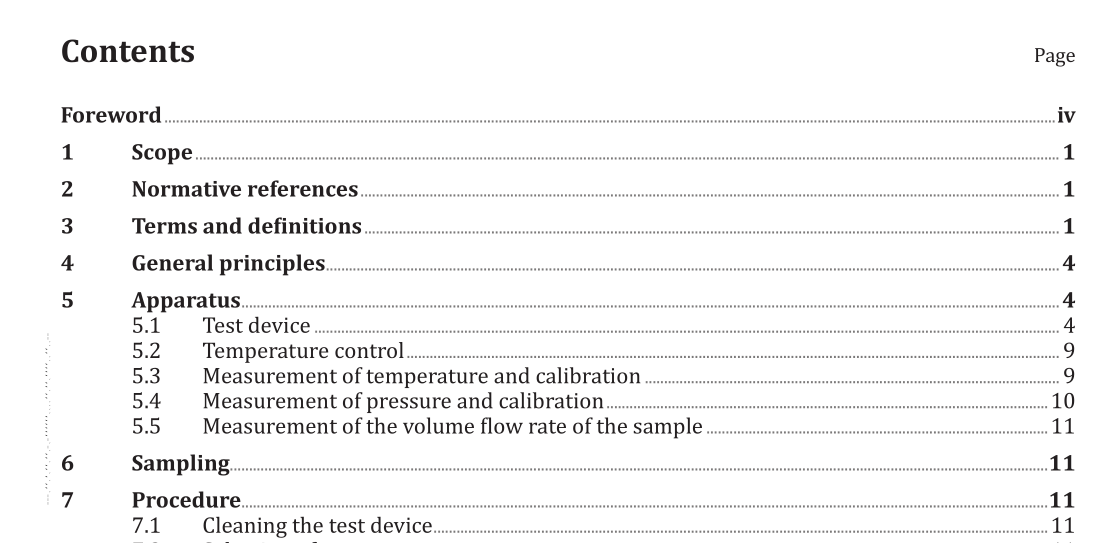ISO 11443:2014 pdf download.Plastics — Determination of the fluidity of plastics using capillary and slit-die rheometers
1 Scope
This International Standard specifies methods for determining the fluidity of plastics melts subjected to shear stresses at rates and temperatures approximating to those arising in plastics processing. Testing plastics melts in accordance with these methods is necessary since the fluidity of plastics melts is generally not dependent solely on temperature, but also on other parameters, in particular shear rate and shear stress. The methods described in this International Standard are useful for determining melt viscosities from 10 Pa∙s to 10 7 Pa∙s, depending on the measurement range of the pressure and/or force transducer and the mechanical and physical characteristics of the rheometer. The shear rates occurring in extrusion rheometers range from 1 s −1 to 10 6 s −1 . Elongational effects at the die entrance cause extrudate swelling at the die exit. Methods for assessing extrudate swelling have also been included. The rheological techniques described are not limited to the characterization of wall-adhering thermoplastics melts only; for example, thermoplastics exhibiting “slip” effects [1][2] and thermosetting plastics can be included. However, the methods used for determining the shear rate and shear viscosity are invalid for materials which are not wall-adhering. Nevertheless, this International Standard can be used to characterize the rheological behaviour of such fluids for a given geometry.
5.1.3 Capillary dies (method A)
5.1.3.1 The entire length of the capillary die wall shall be machined to an accuracy of ±0,007 mm for the diameter (D) and ±0,025 mm for the length (L) (see Figure 1). The capillary shall be manufactured using techniques and materials that produce a Vickers hardness preferably of at least 800 HV 30 (see ISO 6507-1 and Note 1 to 5.1.2) and a surface roughness of less than R a = 0,25 µm (average arithmetic discrepancy, see ISO 4287). The capillary opening shall show no visible machining marks nor perceptible eccentricity. NOTE 1 Diameters of capillary dies typically used lie in the range between 0,5 mm and 2 mm, with various lengths to obtain the desired L/D ratios. For testing of filled materials, larger diameters might be required. NOTE 2 Hardened steel, tungsten carbide, stellite, and hardened stainless steel are the most common die materials. NOTE 3 The precision with which capillary dimensions can be measured is dependent upon both the capillary radius and the capillary length. With capillaries of diameter smaller than 1,25 mm, the specified precision (±0,007 mm) is difficult to obtain. Due to the extreme sensitivity of flow data to capillary dimensions, it is important that the capillary dimensions, and the precision with which the dimensions are measured, are known and reported. This also applies to the dimensions (thickness, width, and length) of slit dies (see 5.1.4).
ISO 11443:2014 pdf download
